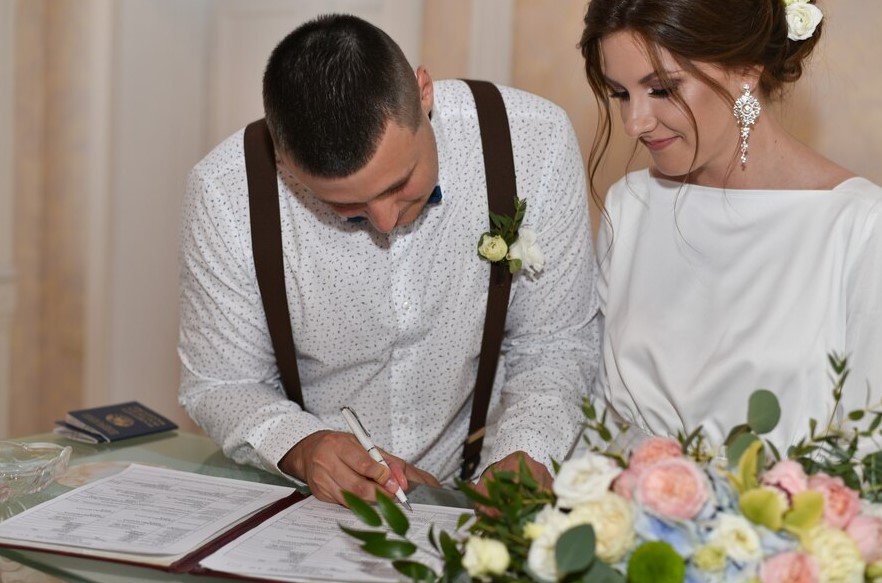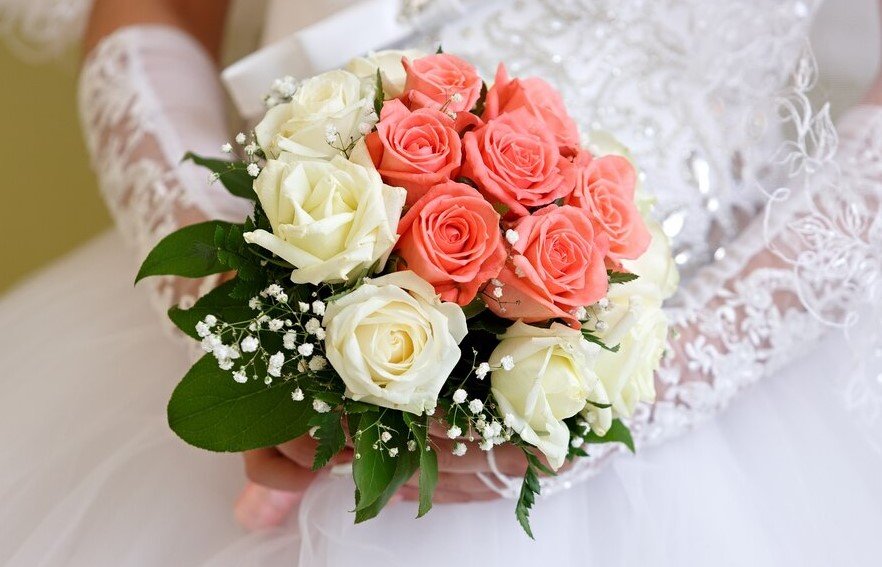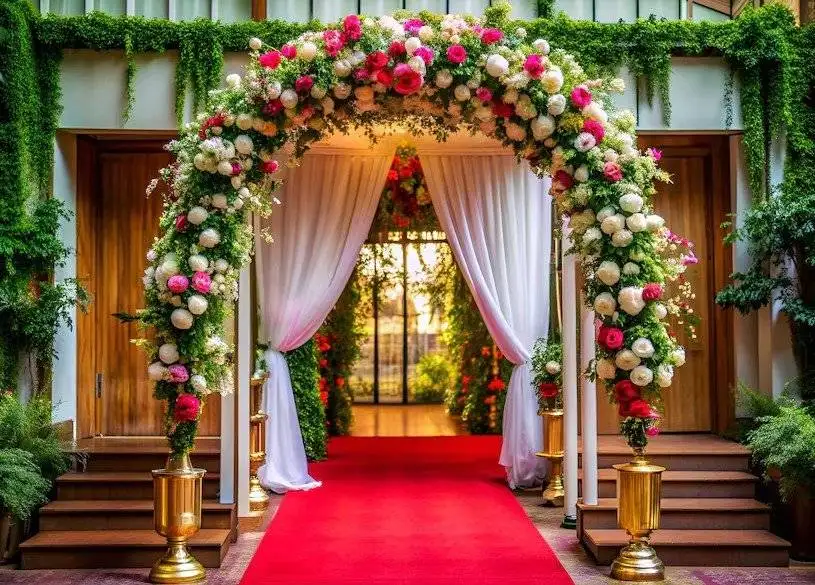Introduction:
Weddings are one of the most critical events in a person’s life, and each couple needs their extraordinary day to be idealized. One of the key components that contribute to a wonderful wedding is blossoms. From bridal bouquets to botanical courses of action, wedding blooms upgrade the class and vibe of the occasion. In this article, we will jump profound into wedding flowers, counting their costs and the sorts of blooms regularly utilized in weddings.
How Much Do Wedding Flowers Cost?
One of the most common questions couples inquire when arranging their wedding is, “How much do wedding blooms cost?” The reply to this address can change altogether depending on a few vital factors:
1. Regularity of Flowers
The time of year you are getting hitched plays a critical part in the fetching of your wedding blossoms. Blossoms that are in season tend to be more reasonable, whereas out-of-season blossoms can essentially raise the cost. Roses, tulips, and peonies, for illustration, are more reasonable in spring and summer, whereas sourcing them in drop or winter will take a toll.
2. Bloom Sorts and Arrangements
The sort of blossoms you select for your wedding can moreover influence the general fetch. Roses, carnations, and daisies are more reasonable choices, whereas extraordinary blossoms like orchids or lilies come with a heftier cost tag. Furthermore, expounding botanical courses of action, such as expansive centerpieces or hanging establishments, will take a toll more than easier bouquets and boutonnieres.

3. Flower Vendor Skill and Labor Costs
The ability and ability of the flower specialist you enlist to affect the cost. Experienced flower specialists who have worked on extravagant weddings may charge a premium for their administrations, and if you’re looking for complex plans or custom botanical courses of action, the labor included will add up to the cost.
4. Scene Measure and Enhancement Scope
If you are facilitating an expansive wedding with an endless setting to enhance, you’ll require more blooms to make an outwardly cohesive topic. Bigger weddings as a rule include more critical costs for blooms, as the sheer volume of courses of action increments. Little hint ceremonies, on the other hand, require fewer blossoms, keeping costs generally low.
Average Cost of Wedding Flowers
While each wedding is special, and costs can change based on your individual choices and area, understanding the normal fetches of wedding blossoms can offer assistance you budgeting successfully. Based on industry measures, the normal couple spends between $1,500 to $3,000 on wedding blossoms, but this cost can vacillate depending on different factors.
Breakdown of Normal Costs:
Bridal Bouquet: $150 – $350
Bridesmaid Bouquets: $60 – $125 each
Boutonnieres: $15 – $30 each
Corsages: $20 – $45 each
Ceremony Blooms (e.g., holy place courses of action, path stylistic layout): $500 – $1,500
Reception Blossoms (e.g., centerpieces, table wreaths): $1,000 – $3,000
These costs reflect standard courses of action, but if you’re looking for excessive, custom plans or bizarre blossom sorts, be arranged to spend more. Moreover, if you’re arranging a goal wedding, figure in transportation costs for blossoms, particularly if they require to be dispatched.

Factors Affecting the Cost of Wedding Flowers
- Types of Flowers Chosen: Some flowers are more expensive than others. For example, peonies or orchids are generally pricier than roses or carnations. If you’re looking for more exotic flowers or those that are out of season, be prepared to pay a premium.
- Seasonal Availability: Flowers that are in season will always cost less than those that are not. For instance, tulips in spring will be more affordable than if you wanted them for a fall wedding. Opting for in-season flowers is one of the best ways to cut down on costs.
- Size of the Wedding Party: The number of bouquets, boutonnieres, and centerpieces required will directly impact the overall cost. A larger bridal party means more flowers, which means a higher bill
Wedding Flowers Bridal Bouquets
A bridal bouquet is more than fair an embellishment; it holds typical meaning and is a key component of the wedding style. Whether you lean toward a straightforward, moderate plan or a sumptuous cascade of blossoms, your bridal bouquet ought to reflect your fashion and complement your wedding theme.
The Significance of Bridal Bouquets
The bridal bouquet is an essential part of the bride’s ensemble, often symbolizing happiness, fertility, and everlasting love. Traditionally, brides carried bouquets of herbs to ward off evil spirits, but over time, flowers became the preferred choice due to their beauty and fragrance. Today, the bouquet is a personal reflection of the bride’s style, taste, and the overall theme of the wedding.
Popular Styles of Bridal Bouquets
There are many different styles of bridal bouquets, each offering a unique look. Let’s explore the most popular options:
- Posy Bouquets: Posy bouquets are small, dainty, and easy to hold. They are often tied together with a ribbon, making them a practical yet elegant choice. These bouquets are ideal for minimalist brides or those looking for something subtle and charming.
- Hand-Tied Bouquets: Hand-tied bouquets give a more relaxed, natural appearance. Flowers are gathered together loosely and tied with a ribbon or twine, creating a soft, romantic vibe. This style is popular for rustic or boho-themed weddings.
- Nosegay Bouquets: Similar to posy bouquets, nosegays are small and compact, but they typically include more greenery. These bouquets are structured and simple, often featuring a single type of flower, making them perfect for bridesmaids or brides looking for a modest design.
- Cascade Bouquets: As the title suggests, these bouquets include a waterfall-like stream of blossoms, creating an emotional, exquisite sight. They frequently utilize longer-stemmed blossoms like orchids, lilies, and greenery to accomplish the cascading effect.
- Pageant Bouquets: For brides who need something diverse, a show bouquet is an arm-held course of action, frequently composed of long-stemmed roses or lilies. This bouquet fashion is superb and modern, giving brides an interesting elective to conventional designs.
Choosing the Right Flowers for Your Bridal Bouquet
Choosing blossoms for your bridal bouquet should reflect your wedding’s by and large topic. Underneath are a few common blossoms brides utilize in their bouquets, each with their claim one-of-a-kind meaning:
- Roses: Symbolizing adore and magnificence, roses are immortal and come in various colors to suit any wedding palette.
- Peonies: Regularly related to sentiment and success, peonies are a favorite among brides due to their full, lavish petals.
- Lilies: Speaking of virtue and refined excellence, lilies include a touch of style to any bouquet. Orchids: Known for their intriguing excellence, orchids pass on extravagance and are idealized for cutting-edge, exciting weddings.
- Baby’s Breath: Frequently utilized as a filler blossom, baby’s breath includes delicateness and softness to bouquets, while moreover keeping costs down.

Bouquet Measure and Shape
The measure and shape of your bouquet are moreover imperative contemplations. Littler, rounder bouquets are best suited for petite brides, whereas tall or emotional bouquets can adjust out a more expound wedding outfit or bigger outline. Furthermore, color plans ought to complement your wedding palette, with delicate pastels loaning themselves to sentimental subjects and shining, strong colors making an articulation for cutting-edge weddings.
Tips for Sparing Cash on Wedding Blooms
While wedding blooms can be a major cost, there are ways to spare cash without relinquishing the excellence of your courses of action. Here are a few tips to keep costs under control:
- Opt for In-Season Blooms: Adhere to blossoms that are in season for your wedding date. This decreases the fetched of bringing in blossoms from other districts or countries.
- Reuse Ceremony Blossoms: Consider repurposing blossoms from the ceremony for the gathering. For illustration, path blooms can be twofold as centerpieces for the supper tables.
- Use Greenery: Joining greenery like plants, eucalyptus, or ivy can add surface and volume to your courses of action while keeping costs lower than utilizing all blooms.
Discover amazing information and unique finds on FuseBay! Don’t miss out—must visit our website for exclusive articles and top-notch blogs tailored just for you!







